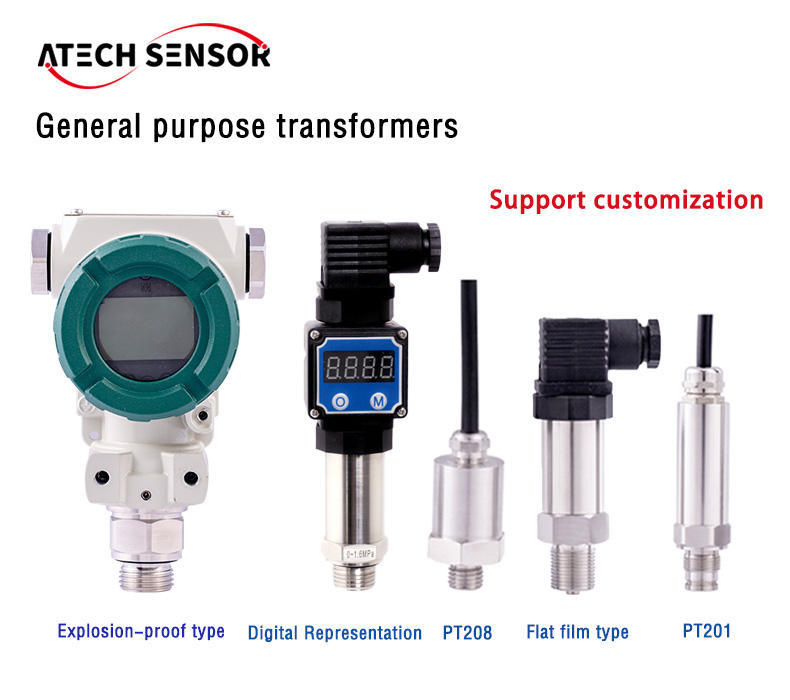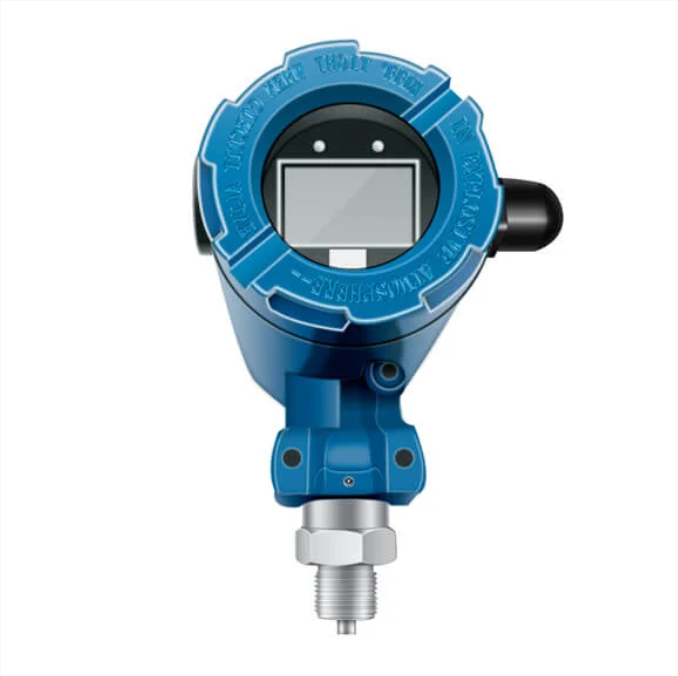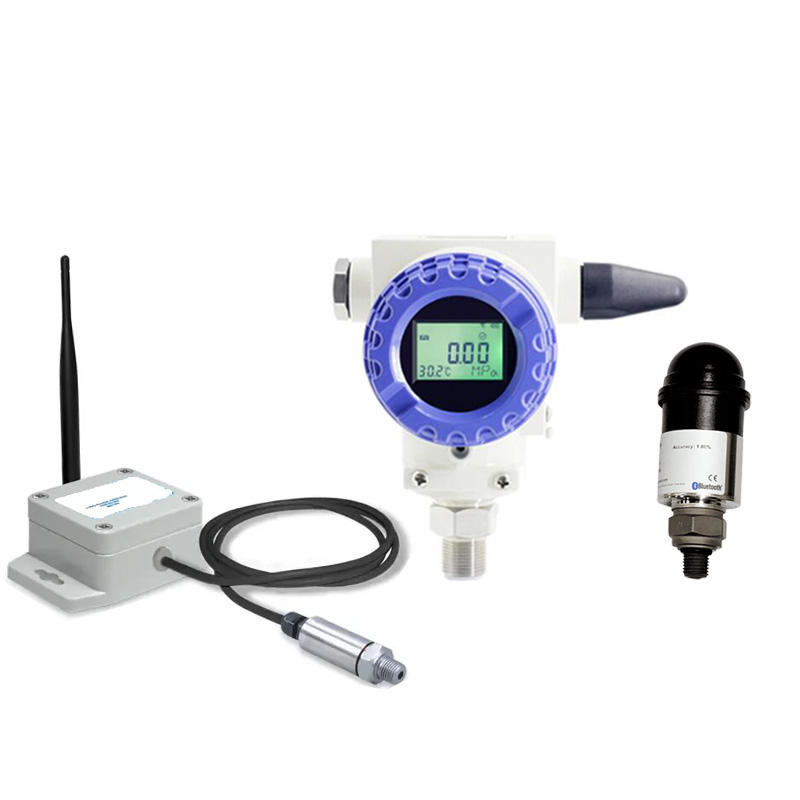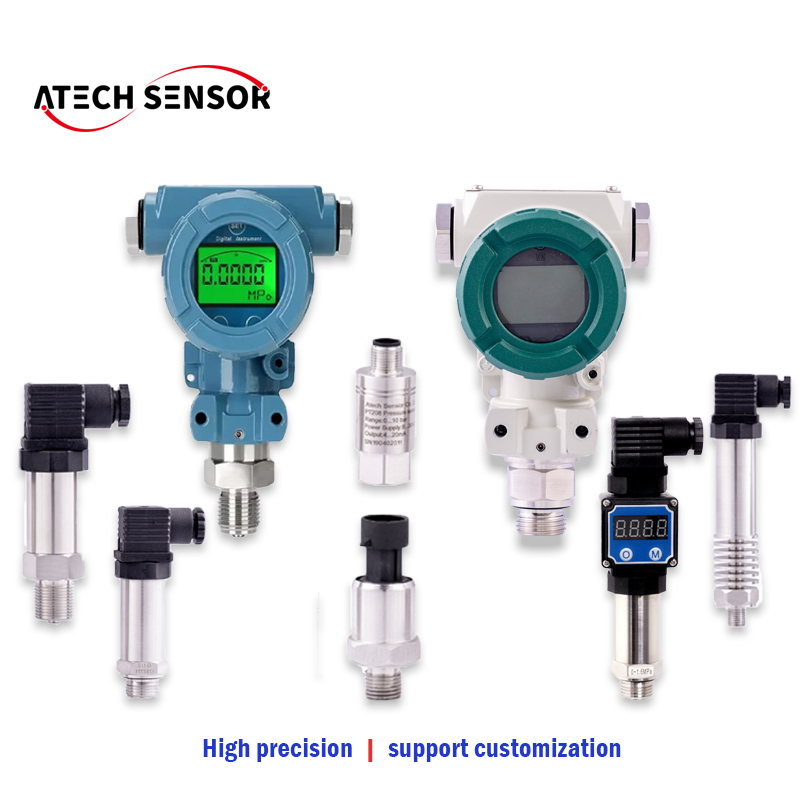1.Introduction to Wireless Pressure Transmitters
Wireless pressure transmitters are devices designed to measure pressure in liquids, gases, or steam and transmit the data wirelessly to a central monitoring system. Unlike traditional wired transmitters, these instruments eliminate the need for extensive cabling, reducing installation time and cost while increasing system flexibility. Hongguang Instrument has been a pioneer in integrating wireless technology with precision instrumentation, ensuring high accuracy and reliability in challenging environments.
2.How Do Wireless Pressure Transmitters Work?
At their core, wireless pressure transmitters utilize advanced sensors to detect pressure variations. The measured data is then converted into a digital signal, which is transmitted via radio frequency (RF), Wi-Fi, or other wireless communication protocols such as LoRaWAN. These signals are received by a gateway or receiver, which relays the information to a control room or cloud-based platform for analysis. This wireless approach significantly streamlines data acquisition and monitoring processes.
Sensor Module: Detects pressure changes with high precision.
Wireless Transmitter: Sends measurement data to a remote receiver.
Power Source: Typically powered by long-life batteries or energy harvesting solutions.
Receiver/Gateway: Collects and forwards data to monitoring systems.

3.Key Advantages of Wireless Pressure Transmitters
Reduced Installation Costs: No need for extensive wiring infrastructure.
Enhanced Flexibility: Easy to deploy in remote or hard-to-reach locations.
Scalability: Effortlessly add new measurement points as needed.
Lower Maintenance: Fewer physical connections mean fewer potential failure points.
Real-Time Monitoring: Immediate access to critical data enhances process safety and efficiency.
These advantages are particularly valuable in industries such as oil & gas, chemical processing, water treatment, and power generation, where process conditions are often harsh and system accessibility is limited.
4.Industry Trends: The Rise of IIoT and Smart Factories
The advent of the Industrial Internet of Things (IIoT) has accelerated the adoption of wireless instrumentation. Modern factories are increasingly integrating smart sensors and transmitters into their operations to enable predictive maintenance, real-time analytics, and remote system control. ATECH Instrument’s wireless pressure transmitters are fully compatible with IIoT platforms, supporting protocols like HART, Modbus, and wirelessHART for seamless connectivity.

5.Applications of Wireless Pressure Transmitters
Wireless pressure transmitters from ATECH Instrument are deployed across a variety of sectors, each with unique requirements and challenges. Below are some of the most common applications:
Oil & Gas: Pipeline pressure monitoring, wellhead control, and tank level measurement.
Water & Wastewater: Pump station monitoring, leak detection, and reservoir management.
Power Generation: Boiler pressure control, steam distribution, and turbine monitoring.
Chemical Processing: Reactor pressure measurement, safety valve monitoring, and batch process control.
HVAC Systems: Chiller and boiler pressure monitoring for building automation.
The versatility of wireless pressure transmitters makes them an invaluable tool for both critical infrastructure and everyday industrial operations.
6.Choosing the Right Wireless Pressure Transmitter
When selecting a wireless pressure transmitter, several factors must be considered to ensure optimal performance:
Measurement Range: Ensure the device covers the expected pressure range of your application.
Accuracy and Stability: High-precision sensors are essential for critical processes.
Battery Life: Long-lasting power sources minimize maintenance requirements.
Communication Protocols: Compatibility with existing monitoring systems is crucial.
Environmental Protection: Rugged enclosures and ingress protection for harsh environments.
Instrument offers a comprehensive portfolio of wireless pressure transmitters, each customizable to meet specific industry standards and operational needs.

7.Calibration and Maintenance
Routine calibration is vital to maintain accuracy and reliability. Instrument provides calibration services and technical support, ensuring that transmitters remain in peak condition. Additionally, remote diagnostics and firmware updates can often be performed wirelessly, further reducing downtime and operational costs.
8.Industry Insights: The Future of Wireless Instrumentation
The rapid expansion of wireless technology in industrial automation is ushering in a new era of efficiency and intelligence. Industry analysts predict that the global market for wireless sensors and transmitters will continue to grow at a double-digit CAGR over the next decade. This growth is driven by the increasing need for real-time data, improved safety, and reduced operational costs.
Instrument is committed to staying ahead of the curve by investing in research and development, focusing on enhancing battery technology, wireless security, and interoperability with emerging IIoT ecosystems. As 5G networks and edge computing become more prevalent, wireless pressure transmitters will play an even greater role in enabling autonomous and adaptive industrial systems.
Wireless Pressure Transmitters vs. Wired Solutions
|
Wireless Transmitter |
Wired Transmitter |
|
|
Installation Cost |
Lower |
Higher |
|
Flexibility |
High |
Limited |
|
Maintenance |
Minimal |
Frequent |
|
Data Accessibility |
Real-time, Remote |
Local, Wired |
9.Related Technologies: Differential Pressure Transmitter and Pressure Sensor
In addition to wireless pressure transmitters, Instrument also specializes in differential pressure transmitter and pressure sensor solutions. A differential pressure transmitter is used to measure the difference in pressure between two points, which is critical for applications such as flow measurement and filter monitoring. Pressure sensors, on the other hand, are versatile devices that convert pressure into an electrical signal and are widely used in automation, automotive, and medical industries.
By integrating differential pressure transmitter and pressure sensor technologies with wireless communication, Hongguang Instrument is able to offer comprehensive solutions for modern industrial automation challenges.

10.Conclusion
Wireless pressure transmitters represent a significant leap forward in industrial measurement technology. With advantages such as cost savings, enhanced flexibility, and seamless integration with IIoT platforms, these devices are rapidly becoming the standard in process industries worldwide. For organizations looking to stay competitive in the era of smart manufacturing, investing in wireless pressure transmitters is a strategic move toward greater efficiency, safety, and operational excellence.

